Essential Wood Carving Tools 2025
- July 31, 2023
- 0 comment
Wood carving is a timeless craft, uniting artists and craftsmen across the globe through the transformation of simple wood into stunning artworks. Whether you aspire to create delicate figurines or grandiose sculptures, mastering this art starts with the right set of tools.
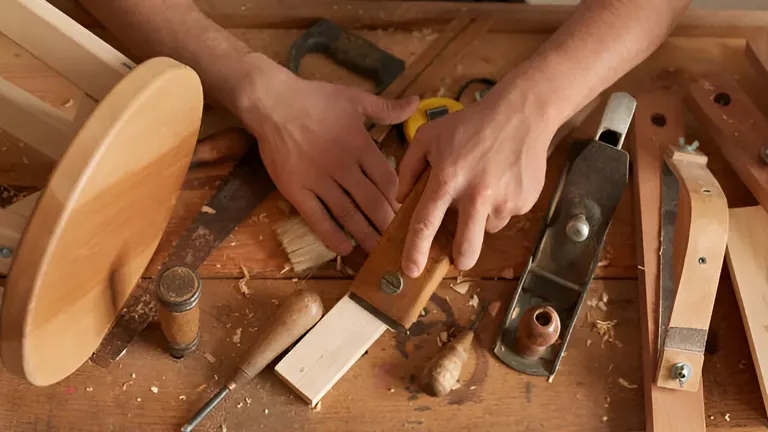
In this guide, we’ll delve into the essential tools every wood carver needs to kickstart their journey. From the precision of chisels and gouges to the power of mallets, we’ll equip you with the knowledge to choose wisely. Plus, we’ll share essential safety tips and techniques to help you carve efficiently and safely, ensuring that every piece reflects your vision and skill. Let’s embark on this path of creativity and detailed craftsmanship together.
Essential Wood Carving Tools List:
1. Carving Knives
No wood carver’s journey is complete without a reliable set of carving knives, which form the backbone of any carver’s toolkit. These essential tools are perfect for a range of tasks from basic whittling to more complex chipping and detailed work.
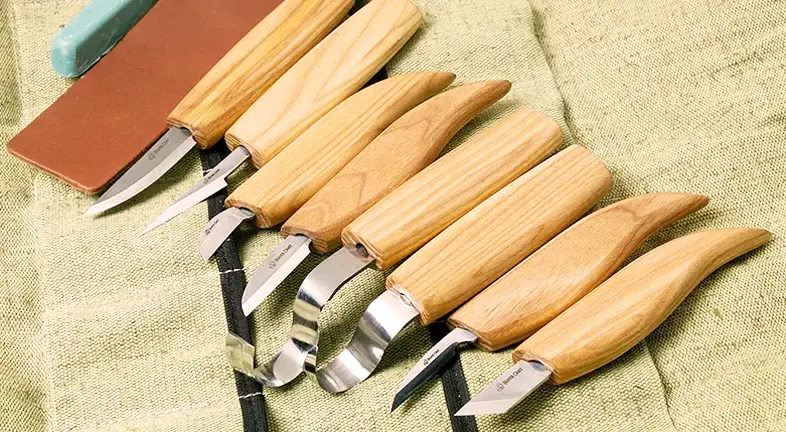
For a versatile toolkit, it’s beneficial to include both a larger knife for rough cuts and a smaller knife for fine, intricate details. The sharpness of the blade and the ergonomics of the handle are critical, as they enhance both precision and control, allowing you to bring your artistic visions to life with clarity and ease.
- Always carve away from your body to prevent any accidental slips from causing injury.
- Keep your knives sharp. A dull knife requires more force to cut, increasing the chance of slipping.
- Use a carving glove on the hand holding the piece for an added layer of protection.
Recommended Product:
Flexcut Carvin’ Jack Collection
The Flexcut Carvin’ Jack Collection is a versatile and compact set of carving tools in a pocketknife-style design. It includes multiple interchangeable blades that cater to various carving needs, making it an excellent choice for woodworkers on the go or those who want a space-efficient solution. The quality of Flexcut tools is well-regarded, and this collection offers a range of blades for different carving tasks.
2. Chisels
Chisels hold a crucial place in wood carving, especially for crafting precise clean lines and sharp corners. Available in various sizes and styles, such as straight edge, skewed, and diamond point, each chisel serves a specific purpose to enhance different aspects of your carving project.
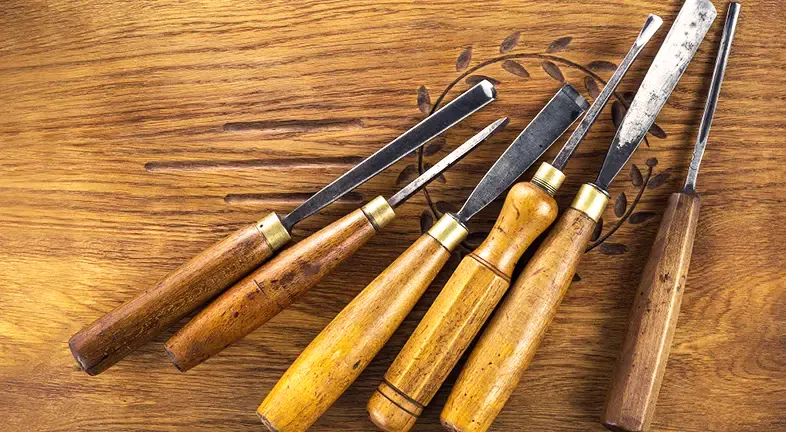
This assortment ensures that you have the ideal tool for each specific task. Typically used with a mallet, chisels can deliver powerful, controlled impacts that carve out materials more efficiently, allowing for meticulous and accurate wood shaping.
- Ensure your chisel is sharp before use. A blunt chisel not only affects the quality of work but can also be a safety hazard.
- Use a mallet, not a hammer, to drive your chisel. A mallet spreads the impact evenly and reduces the chance of the chisel slipping.
- Always keep your hands behind the cutting edge of the chisel.
Recommended Product:
Two Cherries 6-Piece Chisel Set
Two Cherries is a renowned brand for woodworking tools, and their 6-piece chisel set is highly recommended for its exceptional quality and sharpness. The set includes a variety of chisels suited for different tasks, making it suitable for both beginners and experienced woodworkers. The durable construction and craftsmanship of Two Cherries chisels ensure longevity and precision in your carving projects.
3. Gouges
Gouges are essential tools in wood carving, especially useful for their ability to remove wood efficiently due to their curved cutting edges. These tools are crucial for adding depth and artistic contours to your pieces, allowing for a range of effects from subtle texturing to bold hollows.
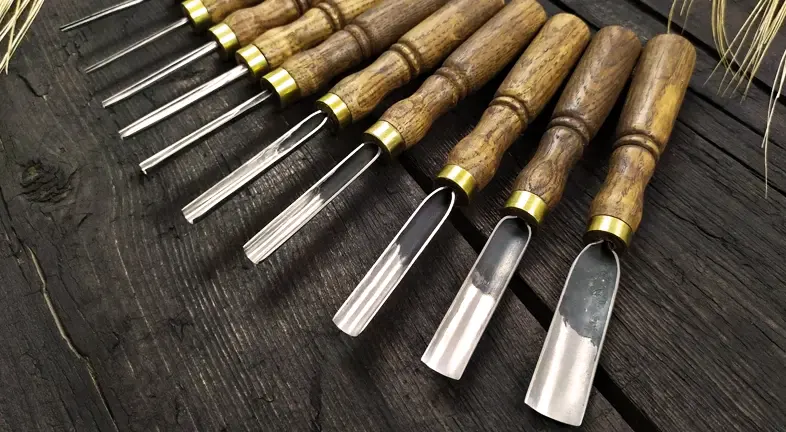
The variety in the curvature of gouges—from shallow to deep U-shapes—provides versatility; shallow gouges excel in wide, surface-level cuts, while deeper gouges are ideal for creating pronounced, narrow grooves. This range makes gouges invaluable for detailed carving tasks and complex projects.
- As with all carving tools, keep gouges sharp for best performance and safety.
- Utilize a mallet for heavy gouging to control the force and depth of the cut.
- Start with shallow cuts and progressively deepen them. Trying to gouge too deeply in one go can cause the tool to slip.
Recommended Product:
Pfeil Swiss Made Intermediate Set
Pfeil is known for producing top-quality carving tools, and their Swiss Made Intermediate Set is no exception. This set of gouges is recommended for its precision and performance. The set includes a range of gouge sizes that allow for intricate detailing and smoother cuts. Pfeil tools are meticulously crafted, making them a popular choice among professional woodcarvers.
4. Mallets
While mallets might seem basic, they are indispensable for wood carving, providing the necessary force for more effective chiseling. Crafted primarily from wood, mallets are designed to be durable, well-balanced, and comfortable in your grip.
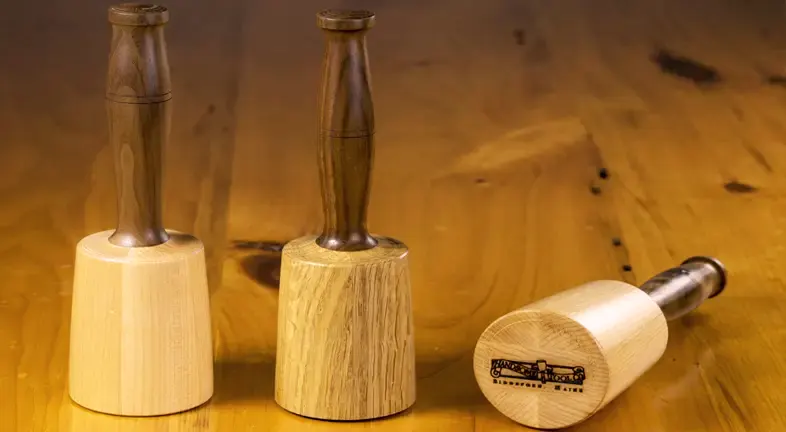
They are used alongside chisels and gouges to deliver the extra power needed for precise cuts, making them a fundamental tool in any carver’s collection. This additional force helps in achieving more controlled and deeper incisions in the wood that might be challenging to accomplish with hand pressure alone.
- Choose a mallet of appropriate weight. Too heavy can cause fatigue quickly; too light may not provide enough force.
- Use the mallet in a vertical motion to ensure an even force distribution.
- Grip the mallet near the end of the handle for maximum control.
Recommended Product:
Wood Is Good Carver’s Mallet
The Wood Is Good Carver’s Mallet is a well-regarded tool for striking chisels and carving tools. It’s made from solid hardwood, which provides an ideal balance between weight and control. The mallet’s design minimizes shock to your hands while delivering sufficient force to the tools. It’s recommended for its comfortable grip, durability, and suitability for various carving tasks.
5. V-Tools
V-tools are vital for adding intricate details to your wood carvings, enabling you to create sharp, precise V-shaped incisions with ease. These tools are uniquely designed for their purpose, aptly named for their distinct “V” shaped cutting edge. They excel at parting wood and highlighting fine lines within your projects.
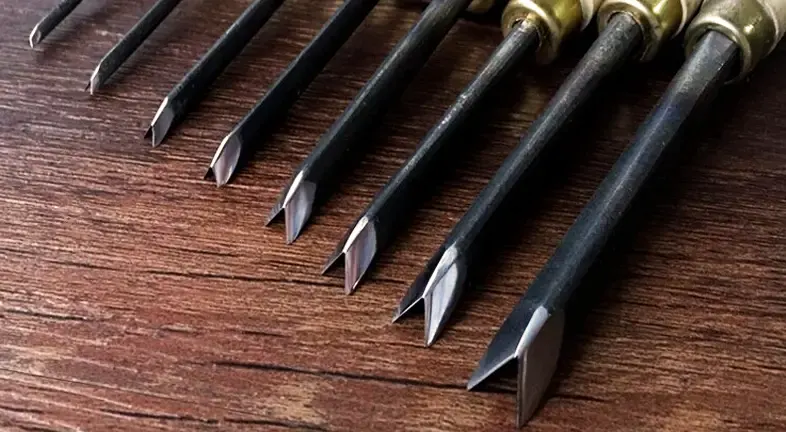
Ideal for carving crisp, clean lines, V-tools are perfect for outlining designs or enhancing decorative details, adding depth and clarity to your artistic endeavors. Their ability to define and detail makes them indispensable for any woodcarver focused on producing high-quality, intricate works.
- Keep the V-tool sharp and clean to ensure accurate, clean cuts.
- Use a carving glove for added safety when working with V-tools.
- Practice on scrap wood first to gain a feel for the tool and understand its cutting behavior.
Recommended Product:
Pfeil Swiss Made V-Parting Tool
Pfeil’s Swiss Made V-Parting Tool is a high-quality tool used for making V-shaped cuts and fine detailing. The precision and sharpness of Pfeil tools are well-known, and this V-parting tool is no exception. It’s recommended for its ability to create clean and accurate cuts, making it a valuable tool for achieving intricate designs and patterns in wood carving projects.
6. Rifflers
Rifflers stand out as specialized tools in wood carving, serving as double-ended rasps or files uniquely tailored to access tight or awkward spaces that are beyond the reach of larger tools. These finely crafted tools come in various shapes and sizes, each designed for specific carving tasks, enabling detailed and precise work on intricate parts of a sculpture or carving.
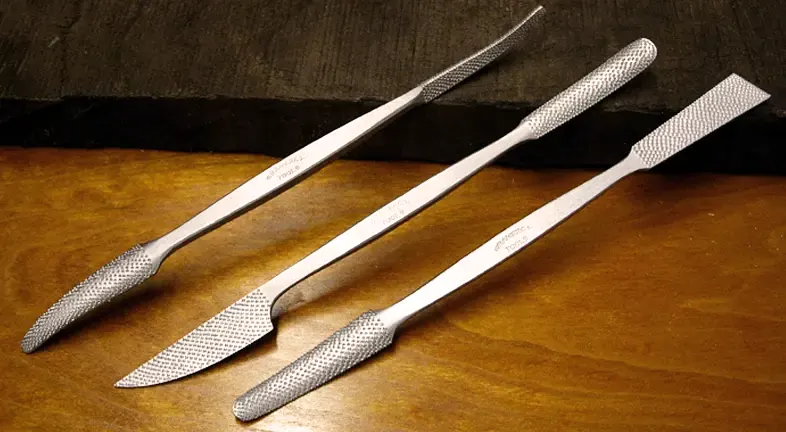
Ideal for smoothing out textures, shaping fine details, and perfecting small features, rifflers are indispensable for any woodcarver aiming to elevate the quality and precision of their work. Their ability to refine and smooth surfaces and edges makes them a crucial component in the toolkit of any carver focused on producing high-quality, detailed pieces.
- Use rifflers gently and patiently to avoid damaging your work.
- Always move the riffler in the direction of the grain to prevent tearing or damaging the wood.
- Keep the riffler’s teeth clean and clear of debris for the best performance.
Recommended Product:
Pferd Rifflers
Pferd Rifflers are Swiss-made hand tools designed for the precision shaping and refining of wood and other materials. Known for their exceptional craftsmanship, Pferd Rifflers come in a variety of profiles and shapes, allowing you to achieve intricate details and contours in your carving projects. These rifflers are well-regarded for their durable construction and sharpness, making them a valuable addition to your carving toolkit. Whether you’re working on delicate carvings or complex patterns, Pferd Rifflers offer the control and accuracy needed to bring your artistic vision to life.
7. Sharpening Tools
Maintaining the sharpness of your wood carving tools is crucial not only for efficiency but also for safety. Dull tools are more prone to slipping, potentially causing accidents, and they require more force to carve, reducing precision and making the process more laborious. Including sharpening stones, honing guides, and stropping materials in your toolkit is essential.
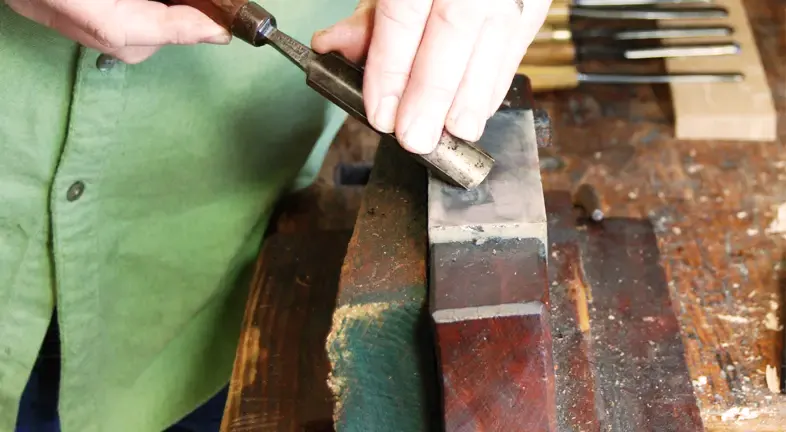
Regular maintenance not only prolongs the life of your tools but also ensures they are always ready for precise and safe use. By keeping your tools sharp, you enhance your ability to execute fine details and maintain control over your carving projects, ultimately improving both the enjoyment and the outcome of your crafting efforts.
- Regularly sharpen your tools to maintain their performance and safety.
- Use a honing guide to ensure the correct angle when sharpening knives and chisels.
- Lubricate your sharpening stone before use to prevent the buildup of metal filings.
Recommended Product:
Work Sharp Knife & Tool Sharpener (WSKTS)
The Work Sharp Knife & Tool Sharpener is an electric sharpener that simplifies the process of sharpening carving tools. It’s recommended for its ease of use and efficiency. The tool employs adjustable sharpening angles and abrasive belts to achieve a sharp edge on various tools. It’s suitable for those who want a reliable and straightforward sharpening solution.
8. Safety Equipment
While diving into the world of wood carving, prioritizing safety is essential. Equip yourself with safety glasses to shield your eyes from flying wood chips, which are an inevitable part of carving.
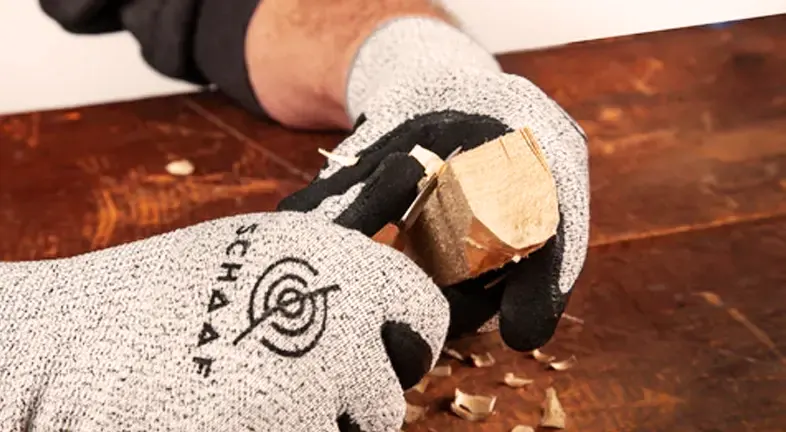
Additionally, wearing a dust mask is crucial to avoid inhaling fine wood particulates that can harm your respiratory health. To protect your hands from slips and cuts, consider using a carving glove. Each piece of safety equipment plays a critical role in ensuring that your carving experience is both enjoyable and safe, allowing you to focus on crafting beautiful pieces without risk.
- Safety glasses or goggles are essential to protect your eyes from flying chips.
- Use a dust mask or respirator during sanding or working with certain types of wood to prevent inhalation of harmful dust.
- If working with power tools or making a lot of noise, use hearing protection.
- Keep a first-aid kit nearby in case of minor accidents.
Recommended Products:
NoCry Cut Resistant Gloves
These gloves are recommended for their cut-resistant properties, which protect your hands from accidental cuts while carving. They provide a good balance between protection and dexterity, ensuring you can work safely without compromising control.
DEWALT Safety Goggle
DEWALT’s safety goggles offer ANSI-rated eye protection. They are recommended for shielding your eyes from wood chips, dust, and debris generated during carving. The anti-fog feature ensures clear vision, making them a practical choice for safety.
3M Respirator
The 3M Rugged Comfort Quick Latch Half Facepiece Respirator is recommended for its comfortable fit and effectiveness in filtering out wood dust and other particles. Respirators are crucial for maintaining good respiratory health while working with wood and dust-producing materials.
Conclusion
In conclusion, the art of wood carving is a dance between creativity and precision. As we navigate this world of artistry, we must remember that the safety and efficiency of our dance greatly depends on our understanding and mastery of the tools we wield. Each knife, chisel, gouge, mallet, V-tool, riffler, and sharpening tool plays a crucial role in shaping our creations and is an extension of our artistic expression.
Knowing how to use these tools effectively and safely not only enhances the quality of our work but also elevates our carving experience. So, let’s remember to always carve with care, respect our tools, and never stop exploring and learning. With each wood piece we shape, we are not just crafting an object but embarking on a journey of creativity. Happy carving!
FAQs
- What is the best wood for carving?
Softwoods like basswood, pine, and balsa are ideal for beginners due to their softness and ease of carving. For more experienced carvers, hardwoods like oak, walnut, or mahogany can be used for their beautiful grain and durability. - Do I need to have any special skills to start wood carving?
While having artistic skills can be beneficial, they are not strictly necessary to start wood carving. Patience, perseverance, and a willingness to learn are more important. You can start with basic shapes and gradually move on to more complex projects as your skills develop. - How do I maintain my wood carving tools?
Keep your tools sharp, as dull tools can be dangerous and inefficient. Regularly oil the handles if they are made of wood to prevent them from drying out and cracking. Store them in a dry place to prevent rust. - Is wood carving expensive to start?
The cost can vary depending on the tools and wood you choose. However, starting with basic tools like a carving knife, a gouge, and some basswood can be quite affordable. As you advance and invest in more specialized tools, the cost may increase. - Can I use any wood for carving?
While you technically can carve any wood, some types are easier to carve and provide better results. Softwoods are generally easier for beginners. Hardwoods can provide more detail but are harder to carve. - What safety equipment do I need for wood carving?
At a minimum, you should have safety glasses to protect your eyes from flying chips of wood. A cut-resistant glove can protect your non-dominant hand. Depending on your work, you may also want a dust mask or respirator and hearing protection.
We’re eager to hear from you! Feel free to share your personal experiences and thoughts about the Essential Wood Carving Tools 2025 in the comment section. Your insights could be invaluable for fellow woodworkers looking to make informed decisions!


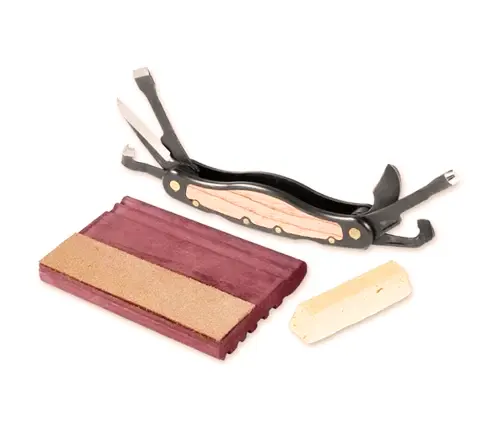

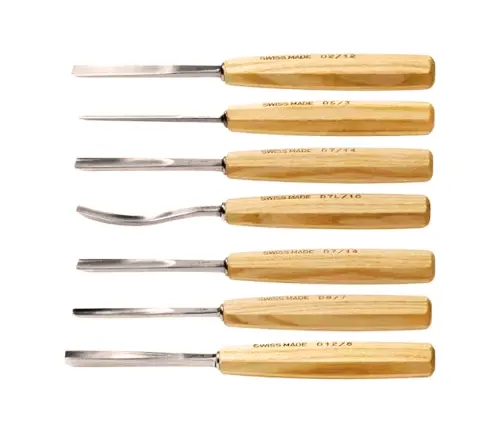
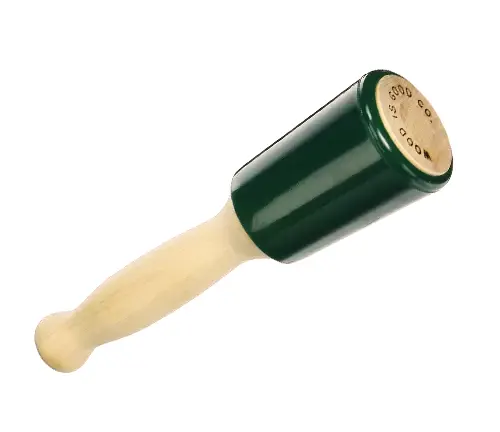
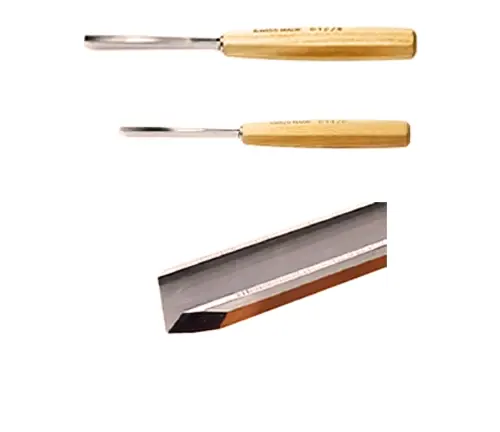
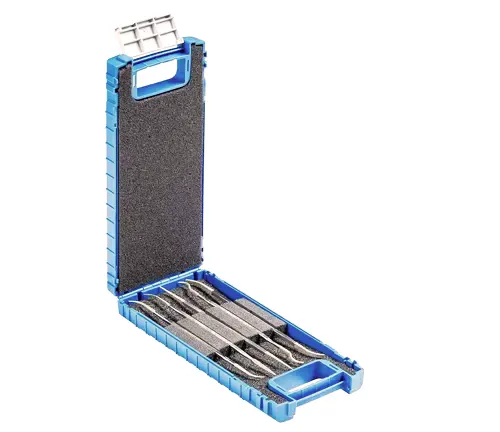
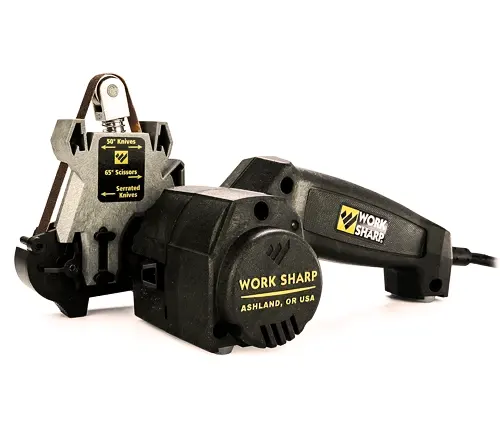






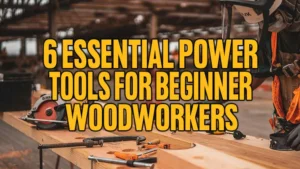




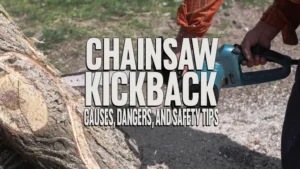

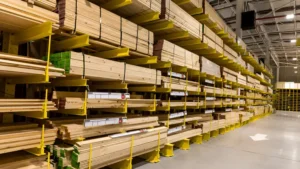

Leave your comment